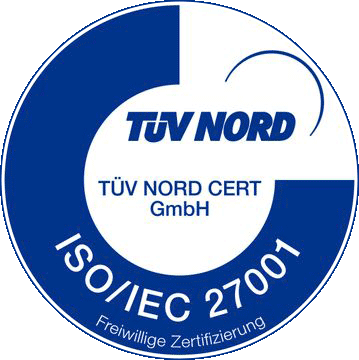Creating sets
Last updated:
You can create sets with frequently used combinations of form elements, which you can then add to any form with just a single click.
By using sets, you can save time, because you will no longer need to add these groups of recurring form elements individually to each form. Instead, you can simply add them all quickly and easily, while also ensuring the consistent use of these form elements.
When creating sets, you can choose whether to make them available just for your own use or also for the members in your team. You can also specify whether certain properties of form elements – such as error messages and information fields – should also be stored in the set.
Saving form elements as a set
- Create or open a form that contains the specific combination of form elements that you want to group into a set.
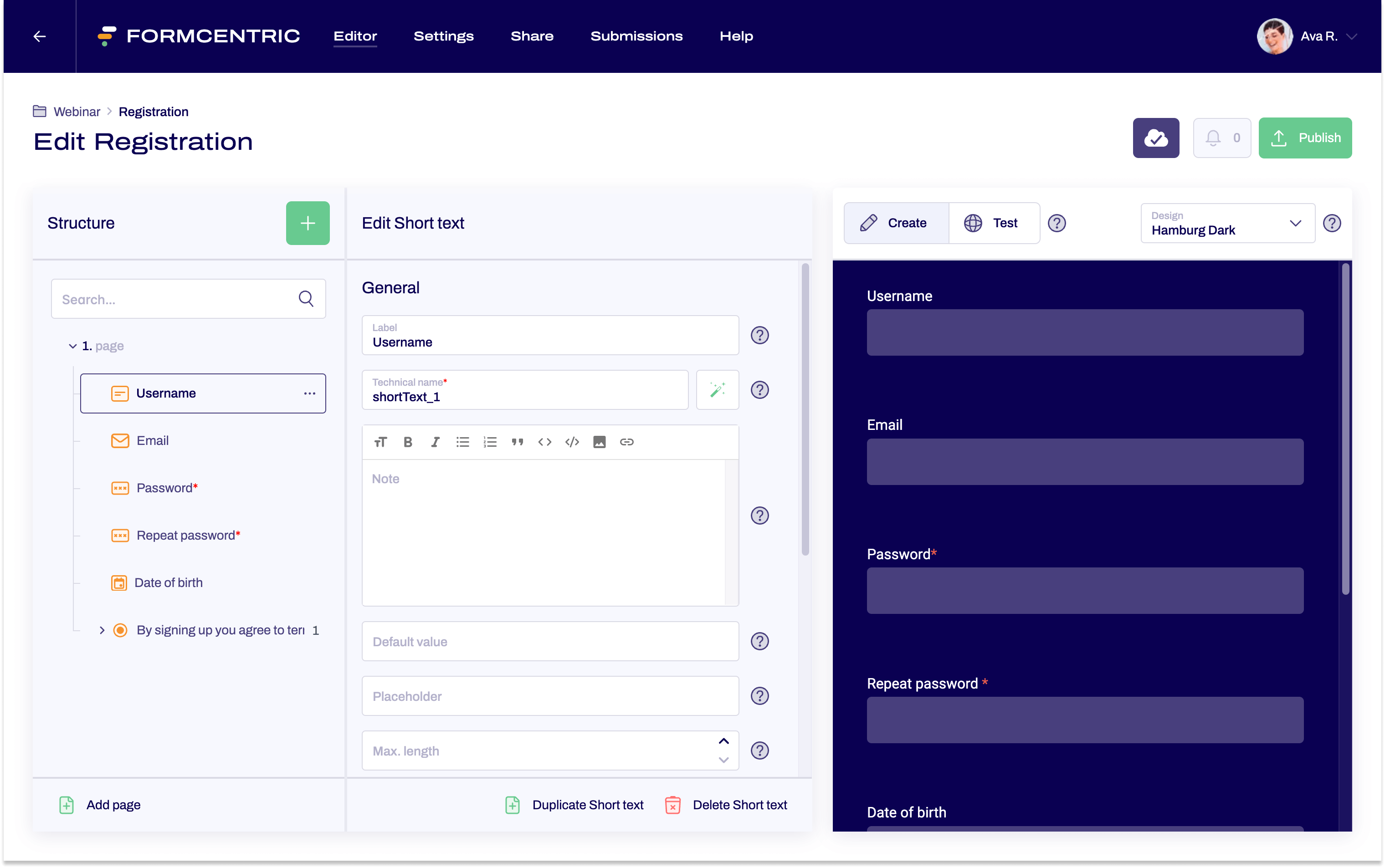
- Click the green plus symbol.
A popover appears with the form elements.
Click the Sets tab and then the New set button.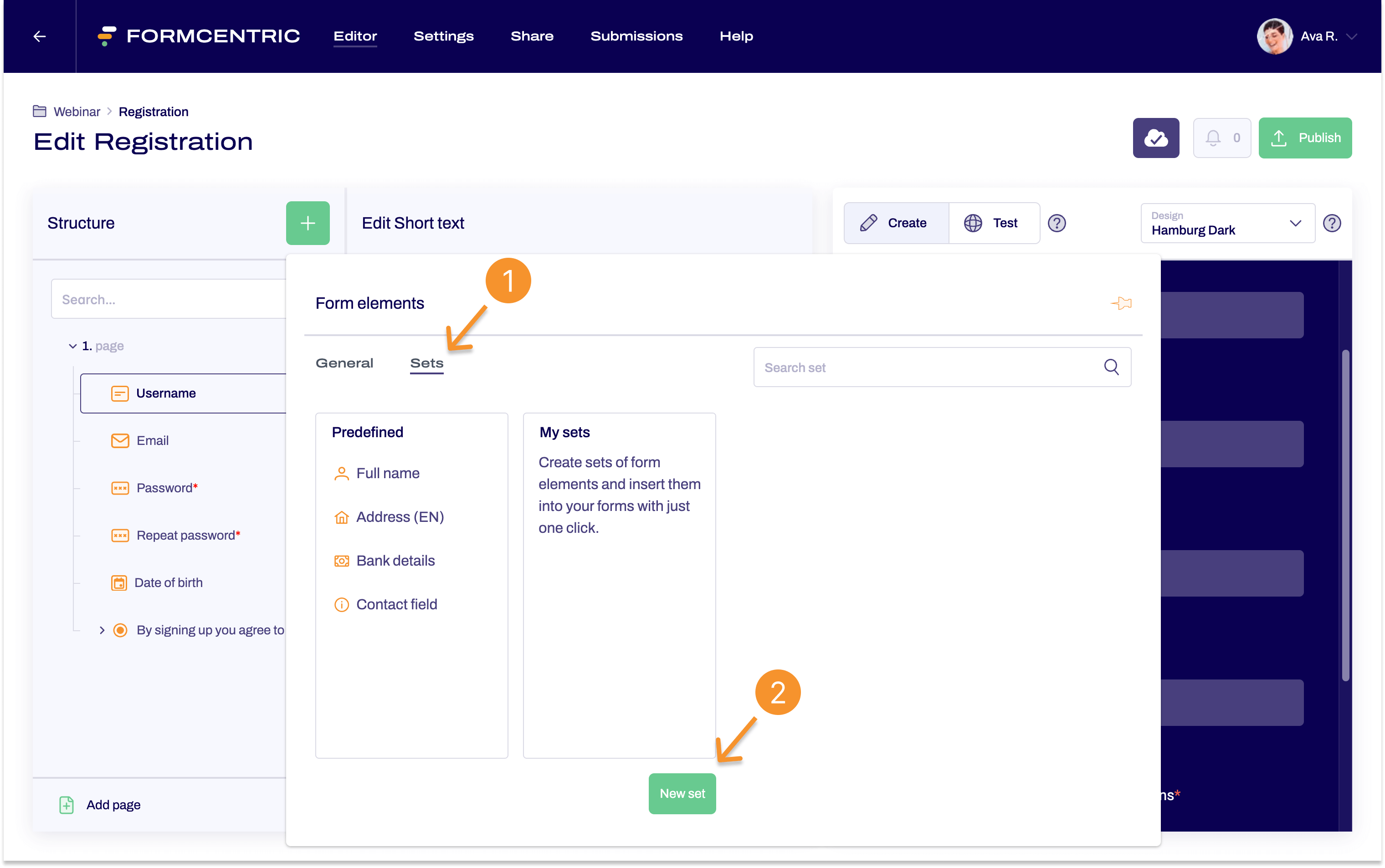
- In the Create set dialog window, choose whether the set should only be available to you or also available to other colleagues who share your account and then click Next.
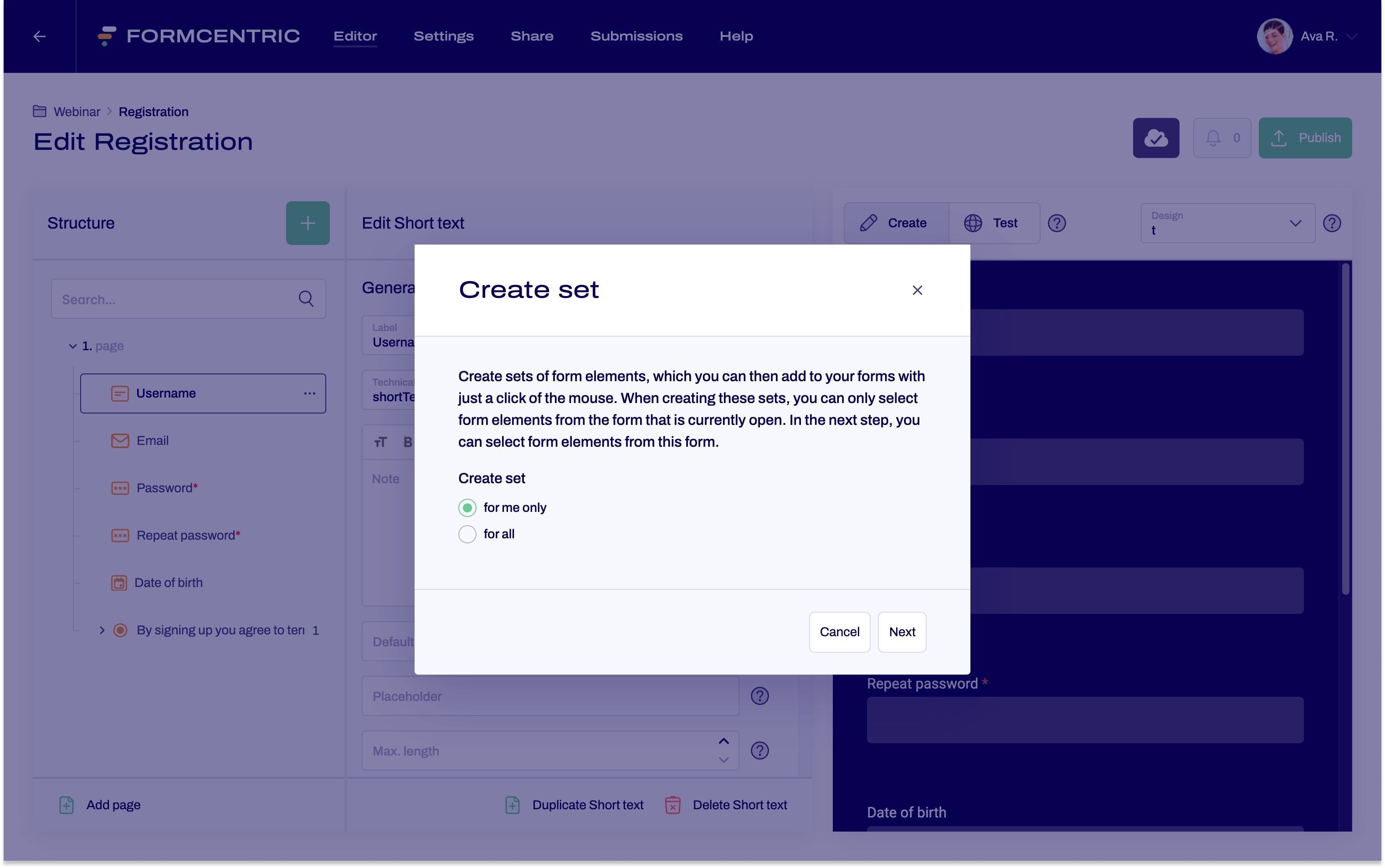
- You can assign an icon to the set in the Edit set dialog window. To do this, click the arrow tip and select an appropriate icon.
You then need to give your set a name. Take care to ensure that you pick a meaningful name that clearly shows what the set can be used for.
With Apply properties, you specify that the settings you have made for the form elements – such as error messages, information fields, etc. – will also be stored as part of the set.
Now select the form elements that you want to save in the set.
- All of the form elements that you have added to the set are listed in the dialog window. You can drag and drop the form elements to change their order.
To edit a form element or view its settings, click the pen symbol next to the corresponding element.
To remove a form element, click the wastepaper bin symbol.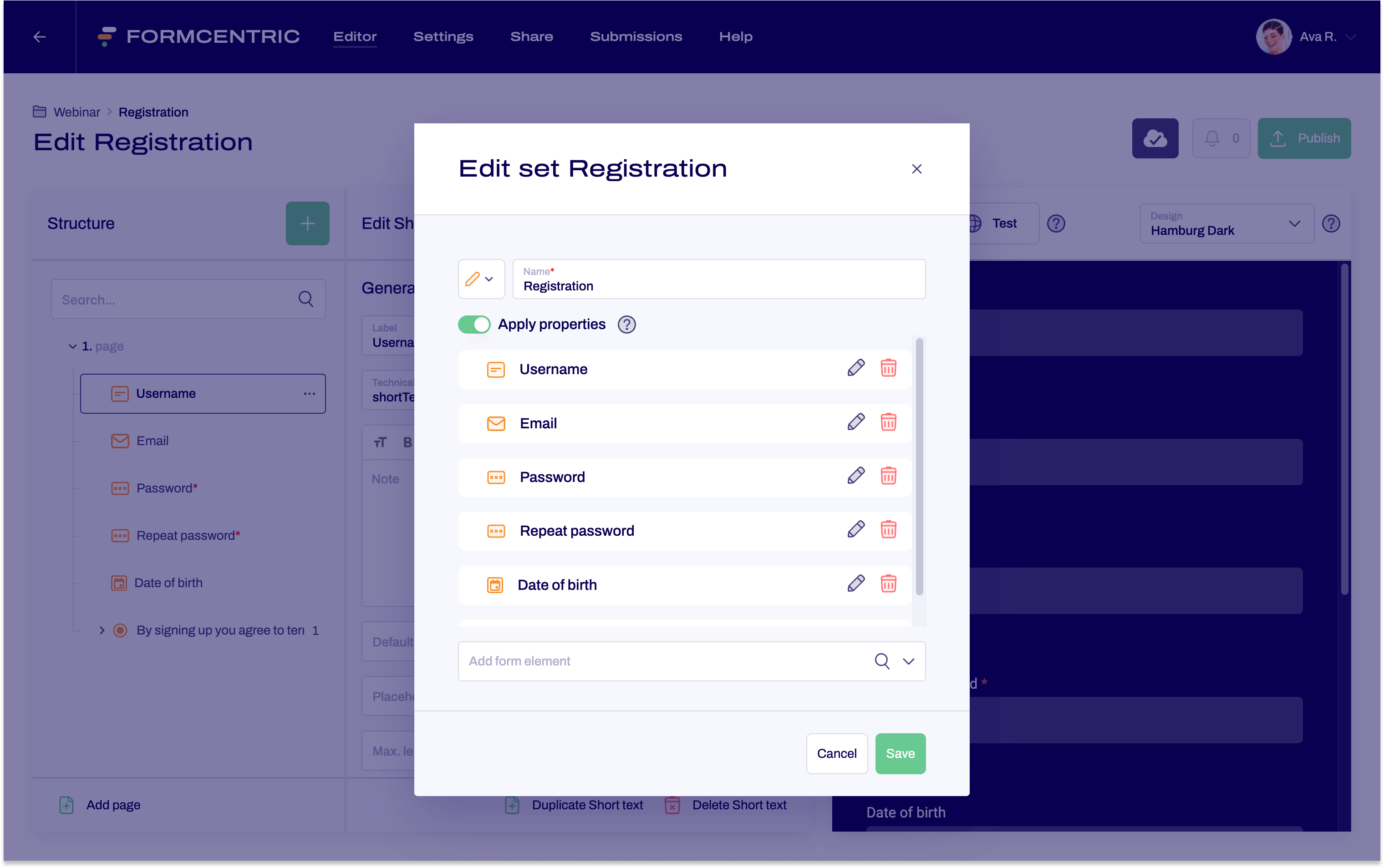
- Click Save to save the set. You will now find the set on the Sets tab, with the form elements under My sets.
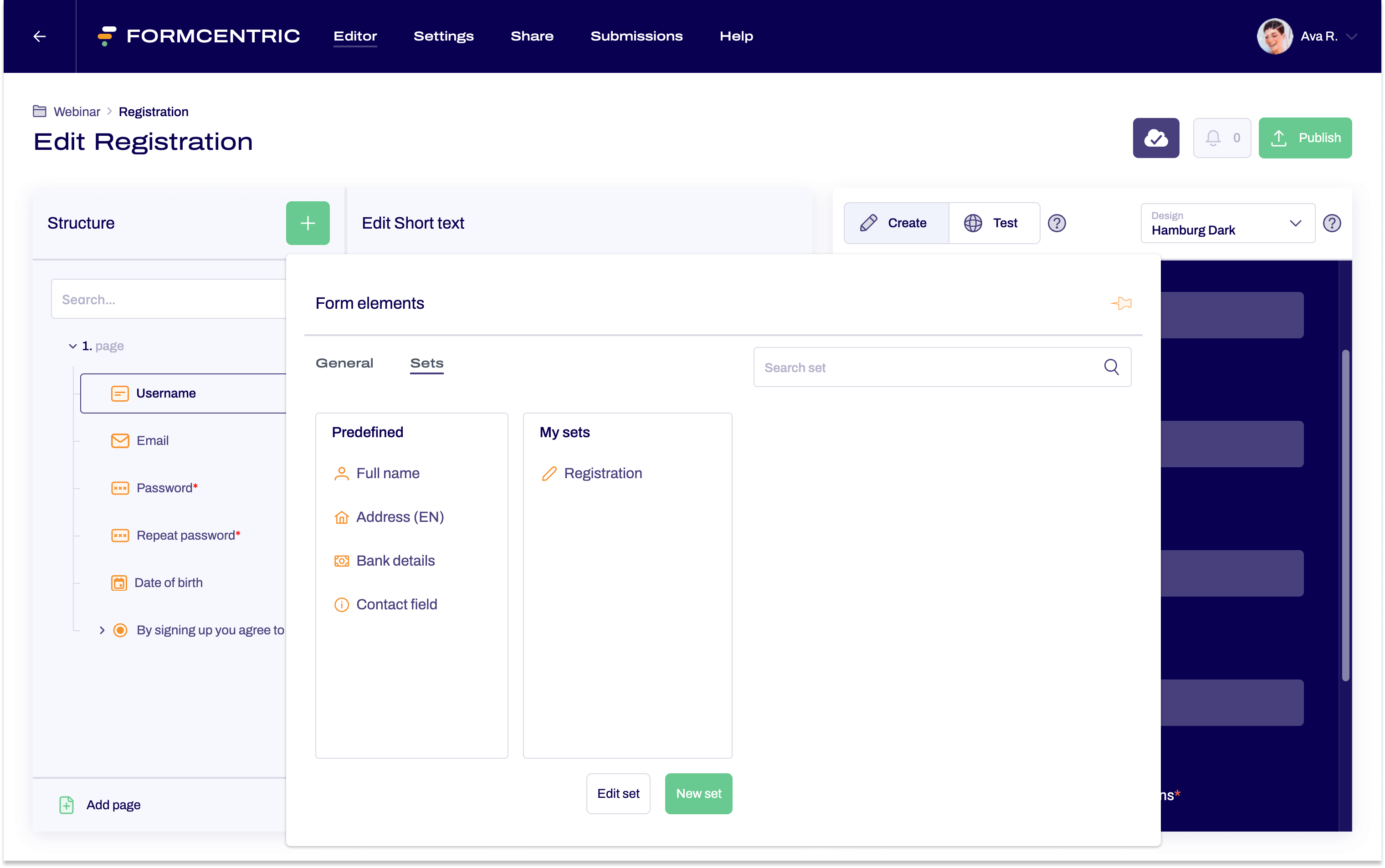
Your set of form elements has been created successfully and can now be added to forms with just a single click.
Creating sets directly in the form tree
In addition to creating sets of form elements using the green plus symbol, you can also create a set directly in the form tree. This method is particularly useful when you want to quickly and easily save multiple selected form elements as a set.
- Select form elements
In the form tree, select the form elements you want to group into a set by holding down the Ctrl key (or Cmd key on Mac) and clicking on the desired elements. - Create the set
Right-click on the selection and choose New Set from the context menu. - Configure the set
Proceed with the same steps as when creating a set using the plus symbol.
Specify whether the set should be available only to you or also to your team members, provide a meaningful name for the set, and select an icon.
By using this method, you can create sets directly from within the existing structure of form elements, which is especially helpful for complex forms.
